|
|
|
|
Today is World Environment Day. Celebrated every year on June 5th, it’s the United Nations’ main way to encourage awareness and action for the protection of the environment. This year the theme is Ecosystem Restoration. This can take many forms. It means helping natural environments that have been degraded or destroyed to recover, and it also means protecting the animals and plants that keep them healthy.
One key way to keep ecosystems healthy in Africa, argue Anja Gassner, Philip Dobie and Terry Sunderland, is to involve farmers and farming land in conservation efforts. Efforts shouldn’t just focus on protected areas.
Some plants are particularly useful to ecosystems, and their protection or restoration is paramount. For instance, as seen in Gabon, large trees can store huge amounts of carbon. John Poulsen identified areas with lots of them and lays out what needs to be done to better protect them. Sea grasses are another important carbon sink. Found in our oceans, they’re also a source of food and shelter for many organisms. Lillian Daudi reveals that many of Kenya’s sea grass meadows have been damaged, but there are efforts to ensure not all is lost.
There are also various animals – which all play a part in keeping their ecosystem healthy – that are under threat because of our encroachment into their rangelands, and all the challenges that brings. But there are various ways they can be protected and their numbers restored. Robin Whytock and Fiona Maisels reveal how two big decisions made earlier this year on African elephants will help to address the specific threats elephants face.
Meanwhile, Monica Bond offers clues to how people and giraffes can thrive together and Femke Broekhuis explains how cheetahs can be better protected from tourists in Kenya’s Maasai Mara.
|
Moina Spooner
Commissioning Editor: East and Francophone Africa
|

|
|
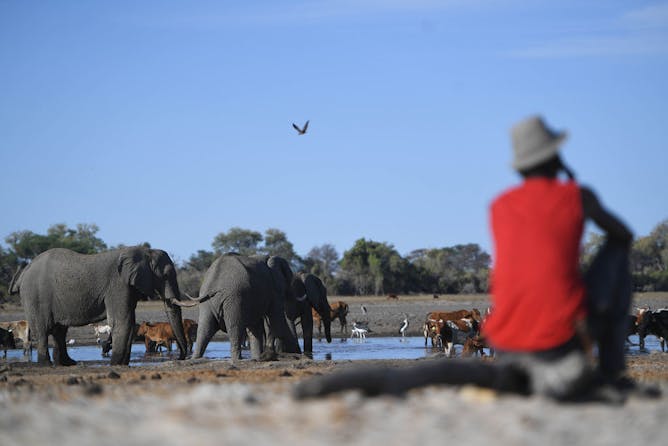
Photo by MONIRUL BHUIYAN/AFP via Getty Images
Anja Gassner, World Agroforestry (ICRAF); Philip Dobie, World Agroforestry (ICRAF); Terry Sunderland, University of British Columbia
Evidence shows that farms that share landscapes with wild nature, such as remnant forests and trees, benefit from the ecosystem services provided.
|
|
|
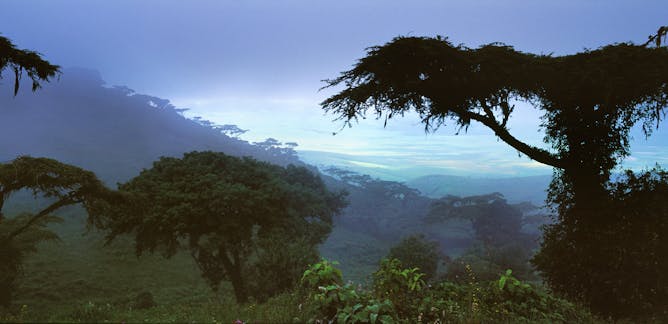
John Poulsen, Duke University
In general, the larger the tree, the more carbon it stores.
| |

Lillian Daudi, Kenya Marine and Fisheries Research Institute
Between 1986 and 2016, Kenya lost about 21 of its seagrasses.
|
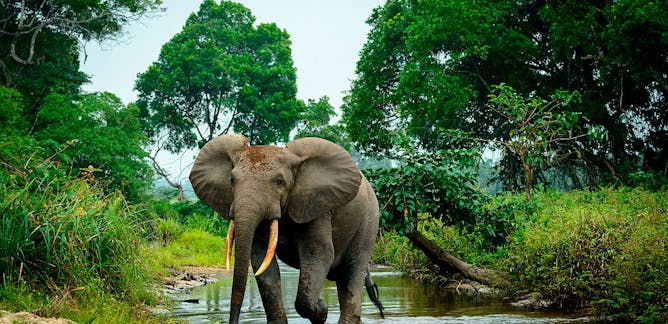
Robin Whytock, University of Stirling; Fiona Maisels, University of Stirling
The International Union for Conservation of Nature has made two big decisions related to the conservation of the African elephant.
| |
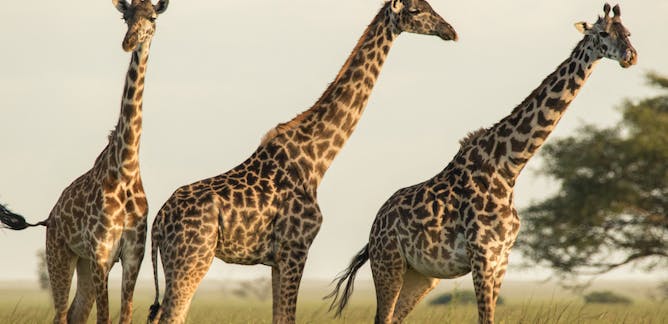
Monica Bond, University of Zürich
Giraffe numbers have plummeted from an estimated 150,000 in 1985 to fewer than 100,000 today.
|

Femke Broekhuis, University of Oxford
New findings show that the numbers of cubs a cheetah is able to rear is lower in areas that receive lots of tourists.
| |
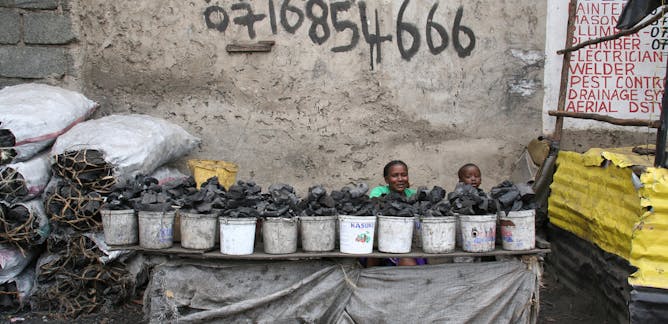
Mary Njenga, World Agroforestry (ICRAF)
There are some big misconceptions about the charcoal sector and its role in environmental damage
|
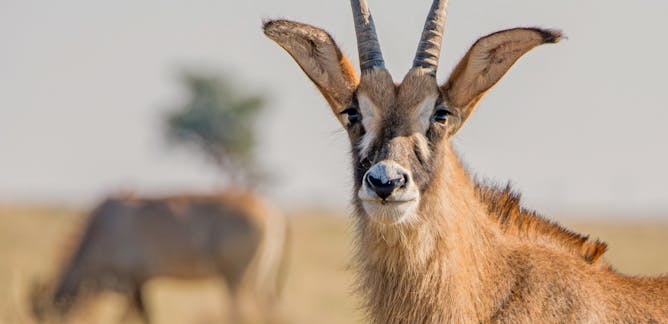
Johnstone Kimanzi, University of Eldoret
Kenya can save its roan population if it re-stocks from other countries, eliminates poaching and improves their habitat.
| |
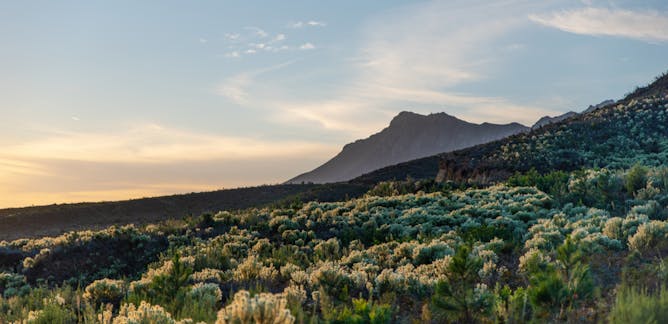
Alanna Rebelo, Stellenbosch University; Karen Joan Esler, Stellenbosch University; Michael Samways, Stellenbosch University; Patricia Holmes, Stellenbosch University; Tony Rebelo, South African National Biodiversity Institute
Cape Town's new climate strategy is a good start. But it falls short when it comes to nature.
|
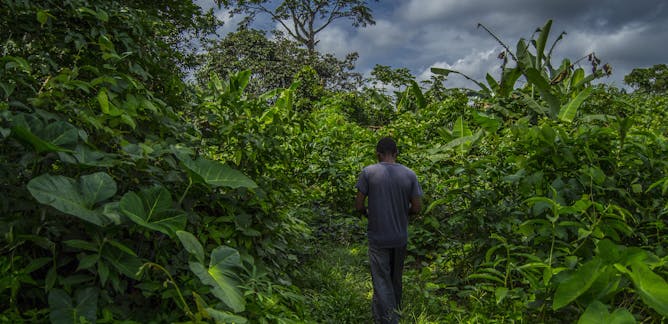
Serge Mandiefe Piabuo, World Agroforestry (ICRAF); Divine Foundjem Tita, World Agroforestry (ICRAF); Peter A Minang, World Agroforestry (ICRAF)
Forest communities have seen little or no change in improving livelihoods and stopping deforestation.
| |

Anne-Liese Naude (Kruger), Cape Peninsula University of Technology
Protecting forests means protecting a rich biodiversity of plants, animals and the livelihoods of many people.
|
|
|
| |
| |
| |
| |

|
| |
| |
| |
Featured events
|

|
Lynwood Ave, Hatfield, Pretoria, Gauteng, 0002, South Africa — University of Pretoria
|

|
Centre for Human Rights, Faculty of Law, University of Pretoria, Pretoria, Gauteng, 0002, South Africa — University of Pretoria
|

|
Lynnwood, Pretoria, Pretoria, Gauteng, 0001, South Africa — University of Pretoria
|

|
University Road, Hatfield, Gauteng, 0083, South Africa — University of Pretoria
|
|
|
|
| |
| |
| |
Would you like to republish any of these articles?
|
|
It’s free to republish, here are the guidelines.
Contact us on africa-republish@theconversation.com in case you need assistance.
|
| |
| |
| |
| |
|
|
|
|
|
|
|